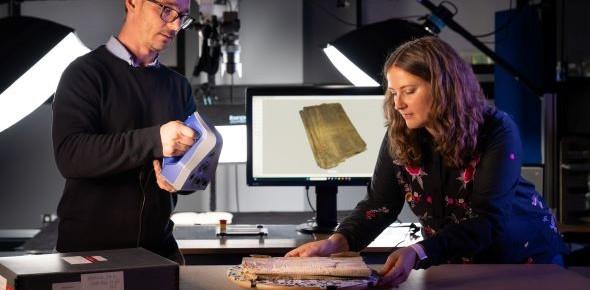
5:00pm-6:00pm on Wednesday 26 March
Runcie Room, Faculty of Divinity, Sidgwick SiteWest Road, CB3 9BS
A fragment from a manuscript of the medieval French story of Merlin the magician was recently re-discovered at Cambridge University Library. It was preserved because it was reused as the binding of a 16th century archival manuscript, a register of property of the manor of Huntingfield in Suffolk. As part as a project funded by Cambridge Digital Humanities, the fragment was not removed from the document but preserved in situ as an original example of modern English archival binding. This implied using cutting-edge techniques (Multispectral Imaging and X-ray examination by computed tomography, or CT-Scan) as well as ingenious manipulations to make possible the digitisation and access to hidden textual parts, and to reveal the structure of the binding. This talk will show how advanced digitisation techniques allowed the virtual unfolding of the fragment (whose handling is particularly delicate) and increased the readability of the text, proving essential to the production of its edition.
Amélie Deblauwe is an imaging specialist with a background in Egyptology, archaeology, and photography. She has worked at Cambridge University Library for a decade, using digital imaging to protect and share its invaluable collections.
Irène Fabry-Tehranchi holds a PhD from Université Paris III, Sorbonne Nouvelle and is the author of Texte et images des manuscrits du Merlin et de la Suite Vulgate (XIIIe-XVe s.) (Brepols, 2014). She oversees French and Francophone collections at Cambridge University Library.
Błażej Władysław Mikuła is a photographer at the Cultural Heritage Imaging Laboratory at Cambridge University Library, specialising in manuscript digitisation, investigative photography, and 3D reconstruction. He is a collector of rare Polish Sci-Fi books from the 1980s.
The event is held in partnership with the Faculty of Modern and Medieval Languages and Linguistics, Cambridge Digital Humanities, Cambridge University Library and the Alliance Française East Anglia.
Have a look at the images of the Merlin fragment on Cambridge Digital Library!

